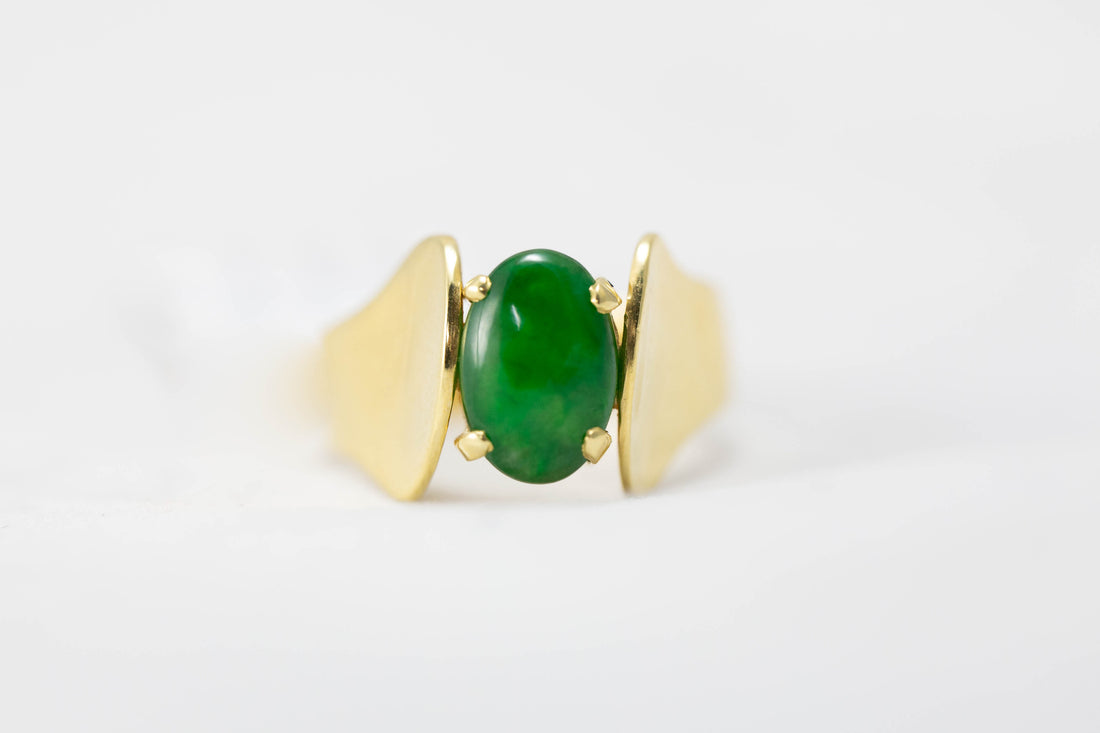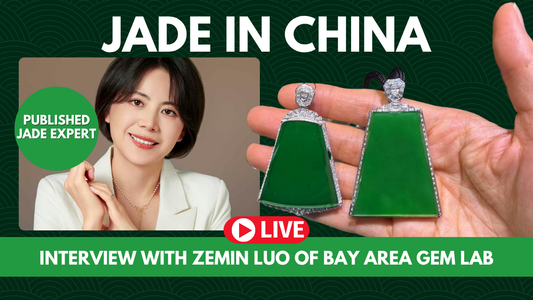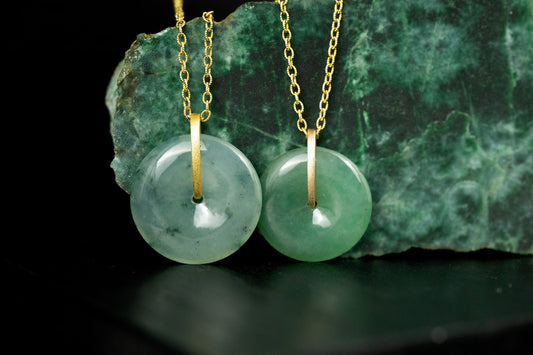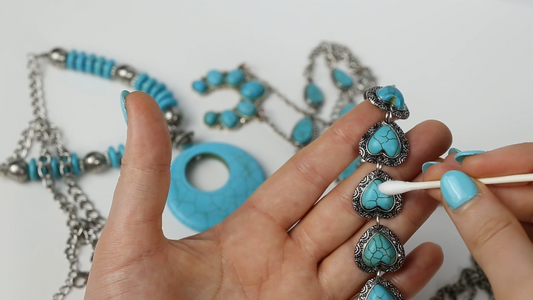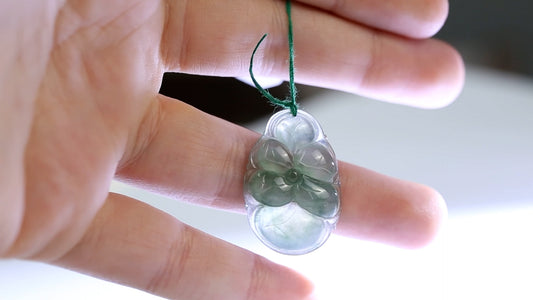Many people believe that natural, untreated jadeite can change color over time. Typically attributed to the health or integrity of the wearer, it’s alleged color fading is sometimes even called the “miracle of jade.” Why an irreversible color change (undoubtedly less desirable than it’s original green) would be an attractive quality is beyond me. Thankfully, the truth about natural, untreated jadeite jade is that it will in fact not change color over time.
Natural jadeite is impervious to perfumes, oils, and most cold acids. Natural jade will not change color from sunlight, and while heat treatment can darken the hue of some red jade, heat from day-to-day exposure to weather and household appliances will not affect the color at all.
While speaking from a position of science and observation, I do not wish to be disrespectful toward those who have such a belief about jade. Jade is held in very high regard by many cultures, including of course that of the Chinese people. Many who have had an experience where their jade faded in color may be surprised to find out that this is not a gemological attribute of jadeite.
This brings us to treated jadeite jades: ‘B Jade,’ ‘C Jade’ and ‘B+C Jade,’ although the answer in any individual case may also be a dyed simulant of jade which we will not cover in this article.

What is ‘B Jade?’
B Jade is jadeite jade that has been acid-bleached and impregnated with polymer or resin.
Valued at 5-10% the value of natural jade, ‘B Jade’ is often sold dishonestly and is very difficult to distinguish from natural jade. Standard gemological testing is inconclusive so a proper gem test requires spectroscopy from a reputable lab. Googling ‘at home jade tests’ on the internet will not help you determine if jade is natural vs. impregnated with polymer.
Can the color of B Jade change? Possibly, if the polymer were to come out.
What is ‘C Jade?’
Also called ‘dyed jade.’
‘C Jade’ is jadeite jade that has been dyed and has been used as a jade treatment for many years. It would be erroneous to refer to ‘C Jade’ as “natural jade” or “real jade.” The dye that gives it its color is considered temporary and can fade over time. ‘C Jade’ has little to no value, but unfortunately is sometimes sold as natural which is why it is always advised to ask for a report from a reputable gem lab such as GIA, AGL, or even a lab testing service guarantee from Mason-Kay Jade.
What is ‘B+C Jade?”’
B+C Jade is a combination of polymer/resin impregnation and dye.
The color of B + C Jade could change color over time.
In an effort to drive sales, most treated jade is sold as natural on the market. Many customers have fallen victim to these scams only to be disappointed when their jade turns out to be treated or a non-jade material entirely. This truth reveals itself when the jade either breaks (as jade is the toughest gem on the planet, unlike it’s simulants and treated counterparts which are quite brittle) or fades/changes body color over time.
My guess is that the powers that sell ‘B Jade’ as natural got ahead of this by marketing “jade” as miraculously color changing. Perhaps there is some other reason, but it’s best to be critical when shopping for natural jade. Always ask for a report from a reputable lab such as GIA or AGL, or a guarantee from Mason-Kay Jade. Reports from online sellers can be falsified, so don’t hesitate to call a lab and check on a report number before buying. Additionally, only shop with sellers whom you trust.
Natural jade is beautiful, hard to break and long lasting, as well as rare and valuable. It is absolutely worth it to do your homework before investing in jade, as buying treated jade or some simulants can have little to no value at all.

